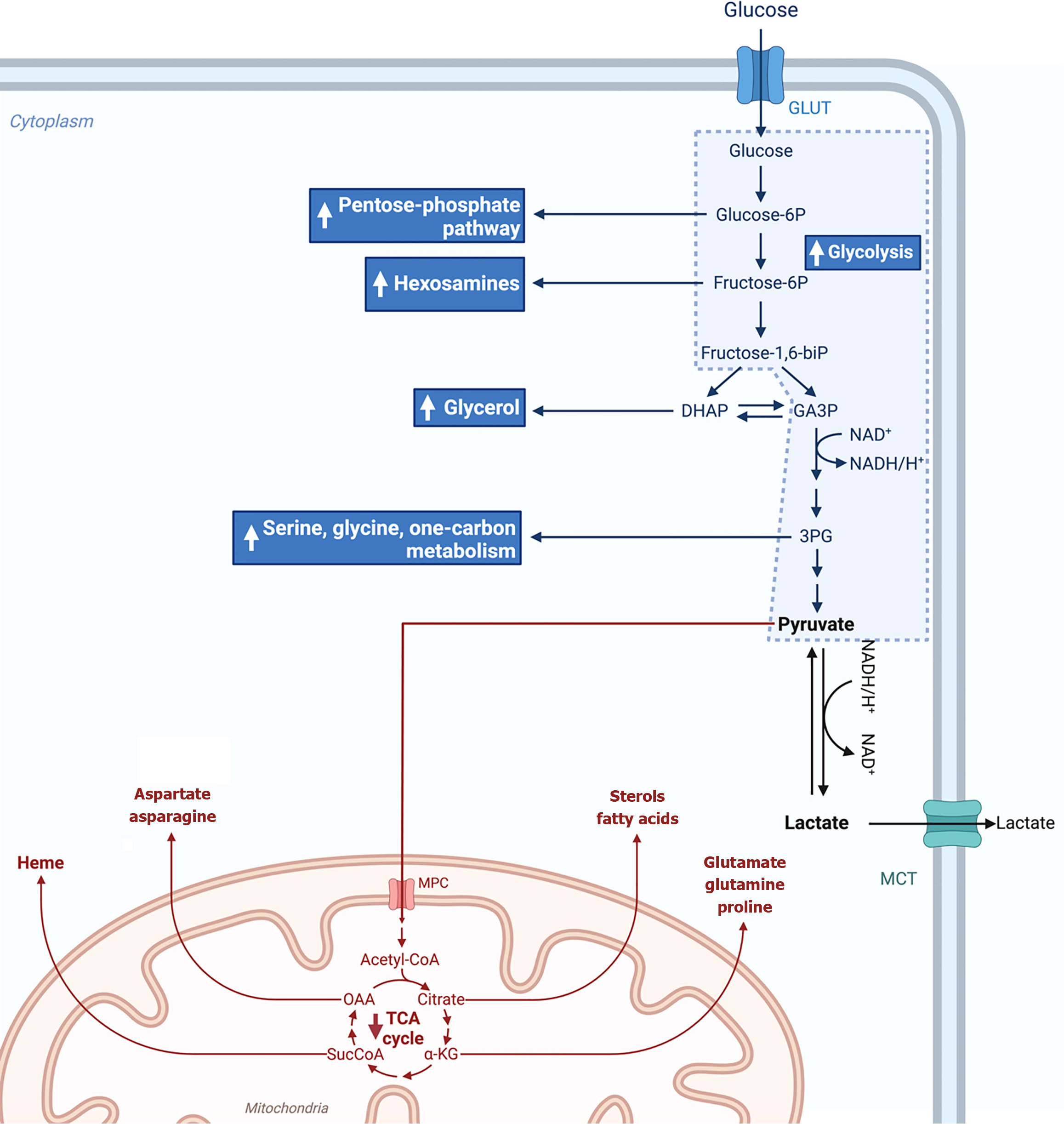Copyright
©The Author(s) 2025.
World J Clin Oncol. Aug 24, 2025; 16(8): 108112
Published online Aug 24, 2025. doi: 10.5306/wjco.v16.i8.108112
Published online Aug 24, 2025. doi: 10.5306/wjco.v16.i8.108112
Figure 2 Illustration of glucose metabolism metabolized in a tumoral cell.
The Warburg effect, also known as aerobic glycolysis, marks the process of glucose conversion to pyruvate and then to lactate, despite cancer cells having a fully functional respiratory chain. In addition to increasing the amount of lactate and protons secreted into the extracellular space, an enhanced glycolytic pathway also makes glycolysis intermediates more readily available. This enables the increased flow of substrates to the one-carbon cycle and pentose phosphate pathway, which supports lipid and nucleotide synthesis and preserves redox homeostasis. 1,3-biPG: 1,3-biphosphoglycerate; 2-PG: 2-phosphoglicerate; 3-PG: 3-phosphoglicerate; ADP: Adenosine diphosphate; aKG: Alpha-ketoglutarate; ALDO: Aldolase; ATP: Adenosine triphosphate; DHAP: Dihydroxyacetone phosphate; ENO: Enolase; FAD+: Flavin adenine dinucleotide; G6PD: Glucose-6-phosphate dehydrogenase; GA3P: Glyceraldehyde 3-phosphate; GAPDH: Glyceraldehyde 3-phosphate; GDP: Guanosine diphosphate; GLUT1: Glucose transporter 1; GSH: Glutathione; GTP: Guanosine triphosphate; HCy: Homocysteine; HK: Hexokinase, LDH: Lactate dehydrogenase; MCT4: Monocarboxylate transporter 4; Met: Methionine; NAD+: Nicotinamide adenine dinucleotide; NADP: Nicotinamide adenine dinucleotide phosphate; OAA: Oxaloacetic acid; PEP: Phosphoenolpyruvate; PFK: Phosphofructokinase; PGAM: Phosphoglycerate mutase; PGI: Phosphoglucoisomerase; PGK: Phosphoglycerate kinase; PK: Pyruvate kinase; SucCoa: Succinyl-coA; THF: Tetrahydrofolate. This figure was created by BioRender.com (Supplementary material).
- Citation: Begagić E, Džidić-Krivić A, Bečulić H, Pugonja R, Ljevaković A, Bašić B, Nuhović A, Milanović E, Hadžić S, Bećirović E, Buljubašić L, Bećirović M, Pojskić M. Glucose and antidiabetic therapy in temozolomide resistance in glioblastoma. World J Clin Oncol 2025; 16(8): 108112
- URL: https://www.wjgnet.com/2218-4333/full/v16/i8/108112.htm
- DOI: https://dx.doi.org/10.5306/wjco.v16.i8.108112









